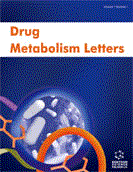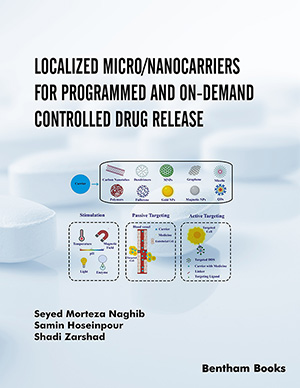Abstract
At the outset, I would like to thank the present and previous authors for their quality and impactful contributions to Drug metabolism Letters. With the journal being open to a wide variety of areas in Biochemistry, Pharmacology and Pharmaceutical Sciences, the journal has consistently achieved a high Impact Factor in the last area, in the past four years. This is a true testament to the impactful science published and the caliber of scientists the journal attracts for submission of their research. We continue to strive to improve the quality of articles published, based on innovative, thought-provoking science. This has been streamlined, under the leadership of the Editor-in-Chief Chandra Prakash, by eminent Associate Editors, Editorial Board members, and Review Panel members (http://benthamscience.com/journal/editorial-board.php?journalID=dml#top). Behind this world class scientific team, working in the background, is the publisher’s staff, who work tirelessly and with much dedication to keep the manuscripts flowing to reviewers and authors so we can make timely decisions. My special thanks to the editorial office staff! The current special issue contains articles from the Editorial Board Members (EBM) as well as from select scientists, with the following highlights that the readers should find of great interest. Albert P. Li (EBM) and Kari E. Schlicht provide a new, composite Km estimation for the major CYPs using hepatocytes from 16 donors and isoform-selective substrates in a high-throughput fashion. The composite Km was derived for each pathway by normalization of individual activities to their respective Vmax. The composite Km values were similar to those in the literature generated using various hepatic sub-fractions. Using this more complete hepatic system, the authors claim that the composite Km values could be used to assess compounds’ impact on DDIs in humans. In a second article, Dr Li and Qian Yang devised a novel medium to overcome the issue of spontaneous decrease in CYP gene expression during hepatocytes incubation for days. The hepatocytes with the new medium were responsive to the CYP gene expression changes induced by proinflammatory IL6 cytokine, confirming the viability of the medium. Another example of leading science in the area of covalent binding of drugs to therapeutic target is presented by Mehran F. Moghaddam (EBM) et al. There is tremendous interest in the covalent modification of proteins leading to target silencing, as shown by the recent approval of drugs in both oncology as well as non-oncology areas. New criteria are proposed for a meaningful screening paradigm for such class of therapeutics. Mert Ulgen (EBM) and his colleagues have devised a simplified approach to simultaneously measure combo agents fluticasone and salmeterol present in a dry powder Seretide Diskus inhalers for asthma. One approach requires no purification steps. Natalia Penner, Xiaojing Liu, and Chandra Prakash (Editor-in-Chief) have designed a new trapping reagent to identify reactive species formation during metabolism. The reagent provides greater sensitivity and broader selectivity to detect reactive species, compared to commonly used trapping agents. Hiroshi Yamazaki (EBM) and his group carried out elegant docking simulations for CYP3A4 and CYP3A5 catalytic active sites with a series of substrates and showed that compounds with greater specificity for one of the CYP isoforms also docked closely to the heme of that CYP. These simulations partly explained the difference in Km values of the substrates for CYP3A4 and CYP3A5. Massimiliano Fonsi has emphasized the need for caution for in vitro-in vivo correlations (IVIVC) based on largely hepatic assessments. The article covers three cases where the IVIVC broke down, determined later to be due to involvement of extrahepatic metabolism. It also shows thorough mechanistic investigations undertaken to design corrective strategies that were eventually adopted for screening purposes. Demir et al. describe the purification of paraxonase (PON1) from sera of patients with Behcet’s disease and analysis of certain drugs, used in the treatment of this disease, as inhibitors of this enzyme. PON1 is one of the body’s defense mechanisms to prevent atherosclerosis. PON1 from healthy subjects was activated by the tested drugs, while that from patients was inhibited. Ramifications of these results to understanding the disease control process will require further studies.
 31
31














